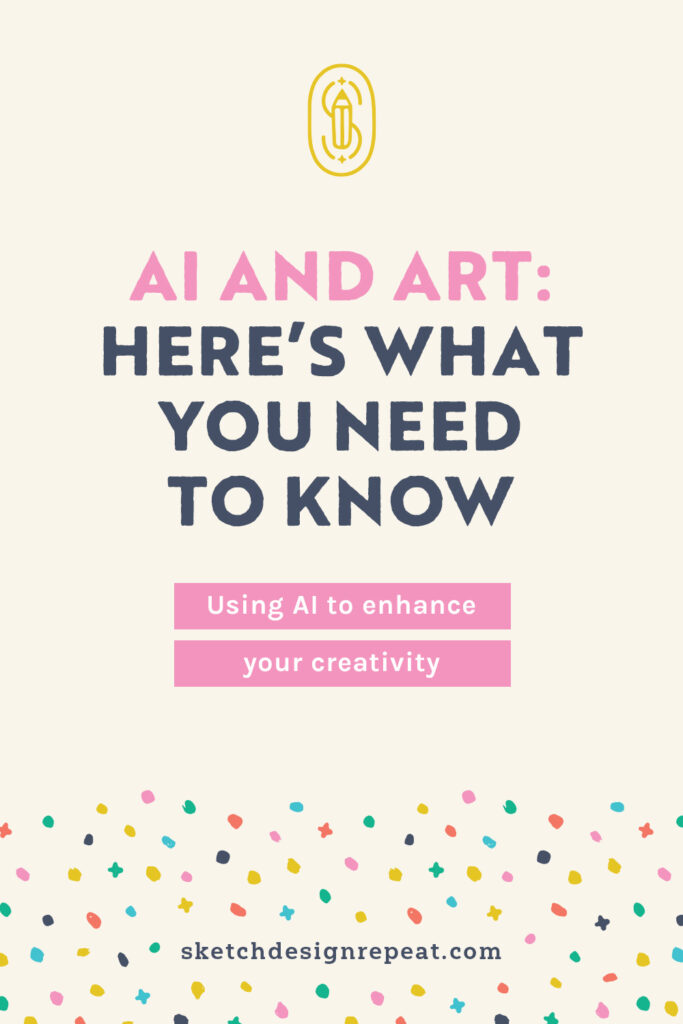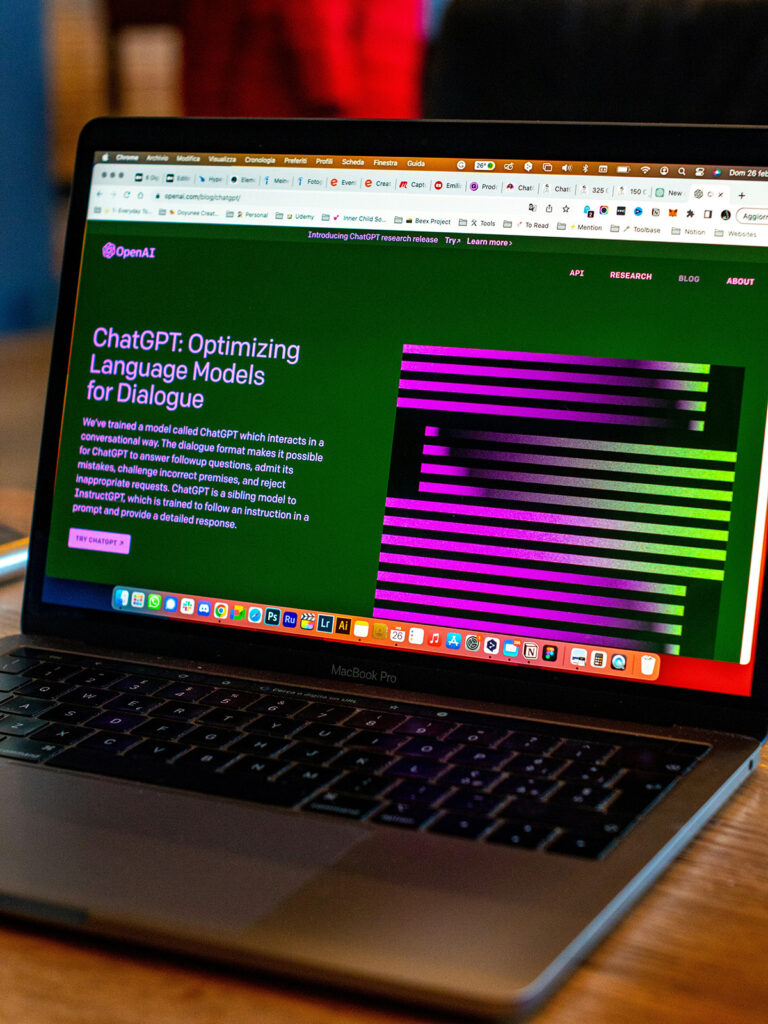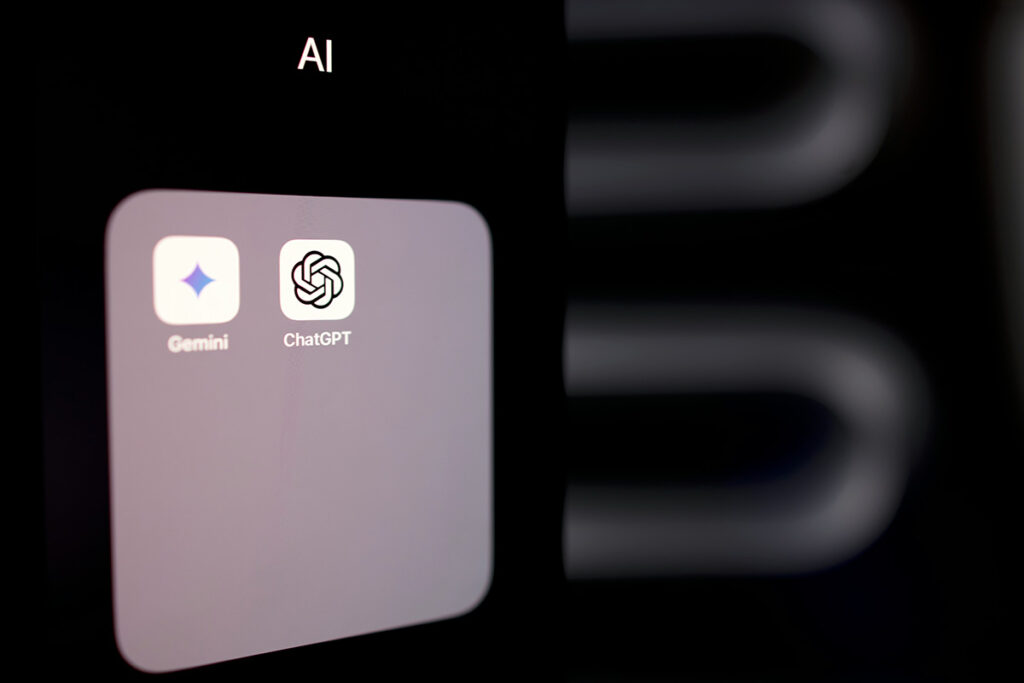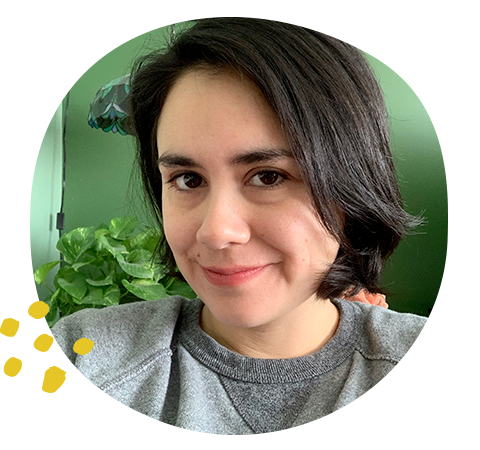There’s a fear that AI is stealing our art, especially with image generators trained on our work. While we may lose some clients to AI, those are likely clients we shouldn’t aspire to work with — the ones who devalue our art and expect low fees. The human element will be something AI cannot fully replicate. What we can control is continuing to create, using AI as an efficiency tool, and ethically integrating its capabilities.

Leveraging AI for Creativity
What if AI wasn’t your enemy, but your secret weapon? Since I started using AI, it’s been a complete game-changer for my creative process. It has helped me with everything from ideation to refinement (yes, I used it to help outline this very post — it just goes to show its potential).
Last fall, I participated in Aurelie Maron’s lettering style challenge. While Aurelie provided the daily lettering style prompts, I knew I needed tight guidelines to keep me focused. So, I chatted with an AI tool to develop a cohesive theme and constraints. I settled on a “Pop Culture Fusion” theme, infusing pop culture essence into each word. The AI also suggested color palettes that aligned with this concept. It was both fun and productive. Used in this way, it’s similar to finding color palettes on Pinterest.
Here are some ways you can leverage AI:
- Generating title ideas
- Outlining content
- Prompting creative concepts or themes
- Suggesting subject lines, tags, or hashtags
- Drafting descriptions or captions
- Reformatting writing between mediums
- Copy editing and refinement
While AI can streamline aspects of the creative process, balancing this assistance with unique human skills is crucial. As I found with my lettering challenge, AI tools require substantial prompting, refinement, and human curation to align with one’s artistic vision. The outputs are not flawless or nuanced enough to use verbatim. Rather, AI becomes a collaborative partner — a “virtual assistant” of sorts, aiding your creative endeavors while you maintain authorial control.
Ultimately, AI should augment rather than replace the inherent creativity and intentionality that makes art resonate.

Ethical Integration of AI
Despite mentioning earlier that AI can be your secret weapon, it should be everyone’s open secret. In an age where everything has been done before, I’ve learned that it‘s all about putting your spin on things.
Transparency should be at the forefront when utilizing AI tools in creative work.
While AI can be a powerful asset, it’s crucial to be open about its involvement and properly credit any artists whose works influenced the AI’s output. This disclosure level addresses ethical concerns and celebrates the human influences that shape AI-generated content.
The use of AI in art has exacerbated an existing issue: the devaluation of creative work and the expectation of low fees. Too often, artistic labor is seen as a casual pursuit rather than a professional craft deserving of fair compensation. As artists, we must advocate for clear copyright regulations and mechanisms to ensure we are compensated when our work is utilized in training AI systems.
Furthermore, we should actively participate in developing and ongoing discussions around ethical guidelines for AI in art. These guidelines must reflect human values and avoid perpetuating harmful stereotypes or biases. The EU AI Act, passed in March 2024, is the first major comprehensive regulation in this realm.
This groundbreaking legislation classifies AI systems into different risk categories and sets out strict requirements for high-risk applications like those used in employment decisions or remote biometric identification. Notably, it mandates that training data for high-risk AI cannot contain any biased or discriminatory elements. There are also strict transparency obligations requiring companies to disclose when AI is being used and what data was used to train the system.
Related Article: Art Theft: What to Do When it Happens to You
For artists, one of the key implications of the passage of the EU AI Act is that AI companies will likely need explicit consent and compensation mechanisms before using copyrighted artworks to train their models. The Act could set a global precedent for other regions to follow in protecting artists’ intellectual property rights in the AI era. However, the specifics are still being ironed out through the implementation process over the next few years.
However, the US lags — while the US Copyright Office has taken the stance that only human-created images are protected, there seems to be no regulation for companies regarding opting artists’ work into training their AI software or platforms.
Alarmingly, AI has exposed a significant Western bias in generated content, as Western images dominate the internet and training data. This contributes to the underrepresentation of minority groups and the spread of misinformation.
As creative professionals, we are responsible for addressing these biases and ensuring AI tools are developed with inclusive, representative datasets that celebrate the diversity of human expression.
Ethical integration of AI in art requires a multi-faceted approach: radical transparency about its use, advocacy for artists’ rights and compensation, active participation in guideline development, and a commitment to promoting inclusivity and countering harmful biases. Only through this holistic approach can we truly harness the potential of AI while upholding the integrity, equity, and human essence of artistry.
For those looking to adopt a more ethical, holistic approach to AI integration, here are some resources:
- The AI Ethics Brief: A newsletter covering the latest in AI ethics developments, guidelines, and debates by the Montreal AI Ethics Institute.
- The AI Ethics Lab: A community platform with tools, tutorials, and courses on ethical AI practices.
- The Artists + Machine Intelligence Program: Google‘s education resource explores AI‘s creative possibilities for artists.
- The AI Incident Registry: A database tracking real-world AI failures to learn from.
- Ethical Source: A curated list of ethical training data sources for machine learning.
Additionally, grassroots organizations like the AI Artists Rights Society advocate for policy changes to protect artists’ intellectual property rights. Staying informed and engaging with such efforts is crucial as the AI renaissance unfolds.

Beyond Integration
While AI can augment certain creative tasks, artists should focus on cultivating the unique human skills that AI struggles to replicate — critical thinking, emotional expression, and conceptual depth.
When I recently tried using AI to generate conceptual illustration ideas for a blog post I was writing, the results lacked the emotional resonance and depth I was aiming for. The AI seemed to miss the nuanced subtext and thematic layers that make such artwork impactful. As I’ve experienced, AI can provide base-level ideas or concepts but lacks the originality and nuance to develop truly resonant creative work.
Today’s AI language and image models are ultimately trained on data, which limits their ability to infuse work with the type of personal experiences, emotional intelligence, and conceptual complexity that human artists can tap into. While AI excels at recognizing patterns, it struggles to truly understand and convey the depth of human experiences that often underpin great art.
Just as AI may one day become extraordinarily skilled at reproducing brush strokes, it may never grasp the deeper motivations and personal introspection that originally guided an artist’s hand. Those unconscious sparks of creativity arising from the human experience are incredibly difficult to codify. Getting trapped into believing AI has the capacity for original, emotionally resonant thinking is a pitfall we must avoid.
AI is a tool to be guided by the human artist’s vision. Art at its core is an expression of each artist’s unique perspective, emotions, and personal truth. AI lacks the richness of lived experiences that allow human artists to inject profoundly personal layers into their work that resonate universally.
Rather than viewing AI as a replacement, artists should embrace opportunities for collaboration — both with the AI technology itself and with their fellow creators. Explore the ethical and creative possibilities together, pushing the boundaries while retaining human authorship. On my collaborative YouTube podcast with fellow SDR blog team member Claire van Kuijck, we’ve already engaged in a two-part discussion building awareness around these topics of collaboration and AI.
Moreover, we must advocate for art education that incorporates AI literacy, empowering the next generation of artists to navigate this evolving landscape thoughtfully. Ethical and responsible use of AI requires a baseline understanding that should be integrated into curriculums. Only then can we collectively regulate AI as a tool while preventing the devaluation of human artistic skills.
Regardless of how we might feel about AI, it isn’t going anywhere. It will be part of the landscape moving forward — it’s our responsibility to create and curate that landscape.
Ultimately, the future should be one of symbiotic collaboration between humans and artificial intelligence.
We must wield AI’s augmentative capabilities to elevate and amplify our unique creative voices, not replace them. AI in its current form is machine learning algorithms, not actual intelligence.
The “AI” label is massively overused and often misleading. AI is not intelligent; it’s a dataset running through an algorithm based on prompts and patterns. This emphasizes its classification as a tool, not an entity with any sort of motivations or goals of its own. By actively shaping its development and integration, artists can ensure it enhances their creativity, expands possibilities, and respects their rights.

Written by Cody Alice Moore
Website: www.codyalicemoore.com
Instagram: @codyalicemoore
Class: Client Feedback Strategies for Creatives
Cody is an artist, illustrator, and surface pattern designer with over 15 years of experience. Cody discovered surface design while working for four years as an art buyer for a national photo lab. Since 2019, she has been creating art full-time for her budding portfolio and growing collection of licensed designs.